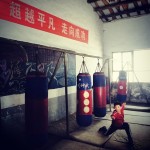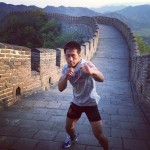Chinese folklore has really only one type of hero, the wuxia martial artist, who is usually unaffiliated with any of the established antagonists and is therefore free to represent the ideal, rather than the fleeting interest. The Chinese knight-errant shows up homeless and wandering, from undistinguished birth, skilled enough to ward off most of the normal challenges to their person and with the wit and righteousness to ward off the rest.
In many Chinese tales, the hero ends up being used by the corrupt authorities, or dies a hero’s death when a tactical retreat might have been wiser. The goal is never to actually fix the realm, however, but to remind the realm of what is good and worthy in life, what there is to be strived for, what it takes to get there, and how the journey “there” is the only true thing in life. No one ever wonders what becomes of the knight-errant’s soul when it slips away from a body sacrificed for an ideal, it is known that those souls ascend and fly free into the hearts of all who hear the tale told.
The true knight is art made human.
In Hong Kong the book fair is wuxia themed, and this article here gives a little insight into why, and how rebellion works in an oppressive, fearful nation like the ones we face today.
Funny how, in the end, they raise up Wei Xiaobao as the conciliatory hero for today’s world.




